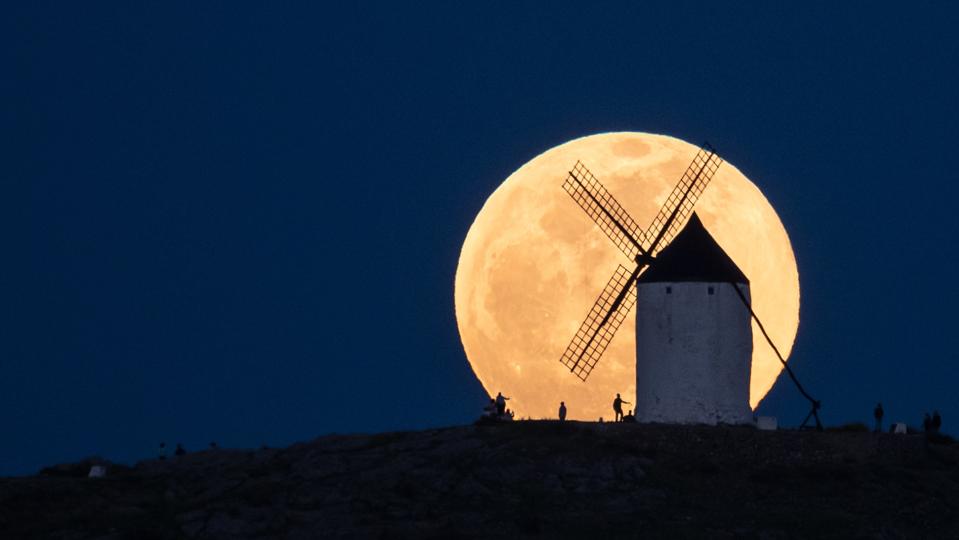Topline
This weekend brings a double treat for some skywatchers, with the rising of the full corn moon and a total lunar eclipse. While North America will miss out on the eclipse, it will still be possible to watch a full moon rise in the east during dusk on Sunday, Sept. 7, 2025. Traditionally named for the harvest season, the corn moon will be a striking sight as it appears on the horizon, marking the Northern Hemisphere summer’s final full moon.
Key Facts
The full corn moon will reach peak fullness at 2:10 p.m. EDT on Sunday, Sept. 7, 2025, with the first view of it from North America coming that evening at moonrise.
In New York, moonrise will occur at 7:22 p.m. EDT, just two minutes after sunset, while in Los Angeles, look east at 7:19 p.m. PDT, five minutes after sunset.
The moon will appear orange when viewed low on the horizon, turning a pale and brighter white as it climbs higher into the eastern night sky.
The total lunar eclipse earlier in the day will be visible in Australia, Asia and Africa, with Europe glimpsing the event at moonset. Lunar totality — when the moon will turn coppery-red to orange — will last for 58 minutes.
Sunday’s Total Lunar Eclipse
The total lunar eclipse on Sept. 7, 2025, is the middle event in a triad, following one on March 13-14, 2025, and preceding the next one on March 2-3, 2026. The entire event, including penumbral phases (when the moon loses its brightness as it enters Earth’s outer shadow and partial phases (when the moon begins to enter Earth’s red shadow), will take around six hours. About 4.9 billion people will see this total lunar eclipse from regions in the totality zone, including Eastern Africa, Central Asia, the Middle East, India, China, Southeast Asia and Australia.
Why This Full Moon Is Called The Corn Moon
September’s full moon is often nicknamed the harvest moon, but only if it’s the closest full moon to September’s southward equinox. This year, that’s October’s full moon. The corn moon gets its name from the Northern Hemisphere’s traditional harvest time for corn and other crops, while some cultures call it the Wine Moon, Song Moon and Barley Moon, according to Timeanddate.com.
When To See Saturn Near The Moon
On Sept.8, just one day after the full moon, look east after dark to see the nearly full moon close to Saturn. The ringed planet is at its brightest this month, reaching opposition on Sept. 21. Binoculars will reveal its steady golden glow, distinct from twinkling stars, but you’ll need a small telescope to glimpse its iconic rings.

